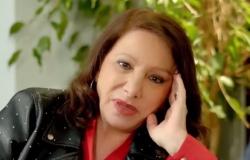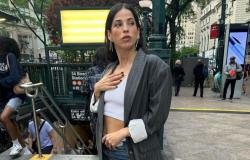“Where danger grows, what saves us also grows.” The previous phrase is from the German poet Friedrich Hölderlin, who between the 18th and 19th centuries sang of beauty, of the increasingly misunderstood mystery of nature, of tomorrow, of yesterday, of the pulp of the present, of the renewing force of myths and man as a universal concept capable of destroying with fire, yes, but also purifying with flame. A way of making humanity more complex in the times of romanticism: humans are both destroyer and creator, sin and miracle.
In this way, Ospina’s essays follow the creative and intellectual adventures of characters such as Charles Baudelaire, Dante Alighieri, Arthur Rimbaud, Diego Velásquez, José Manuel Arango, among others, who made nonconformity a trench. How can the poem, the prose, the painting and the language say anything else? How can the past beget another present? How can language give birth to another language? How does art need to be dangerous to save and prevent the future from becoming a simple landscape instead of a promise?
‘Where Danger Grows’, by William Ospina
Photo:Penguin Random House
However, the most radical gesture of these texts is in the spiritual vocation that runs through them. William Ospina does not profess any faith, at least in the traditional sense. Institutions, as accumulations of hierarchies and prohibitions, do not attract him. What attracts him is the concept of divinity: the mystery that resides in everything and everyone, a personal and direct connection to the belly of the superior (which is not hierarchical or vertical, which is not prohibitive or evasive) and that each person creates every day, in their own way. Because Christ, Buddha, Vishnu, Amaterasu or any other name given to divinity is not an external promise: divinity resides and reincarnates daily in every human being that has existed, exists and will exist.
Some essays were written as read-alouds, others were written afterwards, at what moments did you know you would compile them into a book?
I had written some essays that I had not published so far and was revising them. I was trying to look for a common thread, a connection beyond my own authorship. In that sense, I discovered it in the exercise of looking at specific characters and moments that at one moment changed something through their words, through their artistic intuitions. But, above all, (perhaps knowing it or not, perhaps not) they felt that his times were strongly threatened by complacency and stagnation. And that the only way to change everything, to renew everything, to make everything reborn was through the invention of a new language. And right now understanding that is more important than ever, since we are totally disenchanted with the insurrections.
Because?
We live in times when we are not able to talk or even listen to each other. And not because it is not possible or because we do not want to. The thing is that we have not been able to invent a new language to name the things to come. Not even for the discomforts that society is experiencing, which are discomforts that call upon old names. And I am sure that art has a lot to say on issues such as politics, democracy, ecology, social movements and the ethical challenges that new technologies confront us with.
In your book you say that we need new revolutions, not made with weapons or violence, but with new languages and made of art. What recent revolutions fill you with hope?
I feel, in general, hopeful. I believe that we are witnessing a world that, despite its own anxieties, wants to look for new ways to break the different fences. Violence is exhausting and what is born from it can only reflect the source from which it was born. On the other hand, I think, for example, of the hippie revolution and its ideals of peace and love. I also think of a revolution that emerged two millennia ago and that is still more current than ever today: that of Jesus and his words.
In actual words, you refer to Jesus and his role as “the powerful poetry of Christ,” why?
Christ had a great rebellious character, he opposed the vision of a god as something total and indivisible. That sense made it quite revolutionary, but also the strength of his words. The way he turned the complex into everyday words, the divine into flesh. Not for nothing, one of the names he uses is “son of man,” which appeals to how his voice wanted to reach all people. Not only to a select few or initiates. To every human being. And he went further: not only was he the son of God, but he himself was the father. That is giving each person a piece of divinity. It is one thing to be the subject of a deity: it is a relationship of obedience. On the other hand, if you are his son, it means that there is a familiarity and closeness.
Our societies talk a lot about recognizing the humanity of others, however, in Where Danger Lives you go one step further: recognizing divinity. What does this imply? What is it to recognize divinity?
The pantheon of the Hindu religion is inhabited by more than three million gods. Three million possibilities to get closer to divinity, to the unknowable. This is apparently incompatible with the monotheistic vision of Western religions, but it is not. Because, when we approach a god of Hindustan we are opening a window of that unfathomable mystery that is the existence of something superior. That vision is the one that interests me the most, far beyond any dogma or religion. I don’t think we live in an era of unbelievers: what happens is that God is a concept that is too broad and incomprehensible. Therefore, to recognize the divinity that inhabits each person is to better understand God and his mysteries.
Is every writer or artist a believer in spite of himself?
I wouldn’t say a believer, but I would say a visionary of something. A writer, an artist or a poet is seeking to explain a mystery with human words. Doing that requires a large dose of strength, courage, madness. You can choose to follow the paths already taken or invent new ones, explore what no one else has been able to name. Inventing a language is always a leap into the void. Baudelaire, Dante, Rimbaud and others that I mention in the book did it. They marked an era.
Although there is no specific essay about him, Jorge Luis Borges is a figure that appears in almost all texts: there are quotes and opinions of his. Who is Borges for you?
Borges is always in everything I write, not as an exercise in imitation, but as a teacher who has always been with me. He continues to dazzle me as when I read him for the first time and I tried, like many, to imitate him. The problem is that to imitate Borges is to fail in the attempt. It is not possible to do so, because the mystery of Borges’ artifice is so unique and recognizable that any act of emulation is easily dismantled. Some say that all philosophy is just a footnote to what Plato said. Writing after Borges may be writing about something that Borges already wrote, who always went beyond conventions and genres.
The essay ‘A frame, a dog and a court’, about the painter Diego Velásquez, is written like a story. Despite this appearance, it is an essay and an art critique, why did you choose the story form for this case?
I wanted to do an essay about Las Meninas, but I didn’t want to do a traditional essay or an art criticism in the strictest sense. I wanted to play and I wanted to do something more fun for myself. So in that process I discovered that a monologue in the mouth of King Philip IV could be more interesting to talk about the different things that make up that revolutionary and unique painting. I recently read A Terrible Verdor by Benjamín Labatut and I’m honestly fascinated. That way of talking about science and the discoveries that he has generated with a fascinating and tremendously well-kept style. Those types of games or experiments seem to me to elevate the intellectual conversation.
Perhaps it is because of the historical periods it examines, in which the role of women was completely secondary, but there is a great absence in the book: female writers. Which authors are part of your reading heritage? What has been their role in the art revolution?
Many writers have been my teachers. To name a few there are Virginia Woolf, Soledad Acosta de Samper, Gabriela Mistral. Above all, I would like to mention Mary Shelley, who anticipated all the issues that we as a society are talking about today: science, its implications, its limits, its dangers, the way we abuse resources. It’s impressive how current it still is. Many authors from her time have been forgotten, but she and her Frankenstein remain on every bookstore shelf in every country in the world. It is fascinating what this writer achieved.
Sergio Alzate
FOR THE TIME
@ColorLenteja






